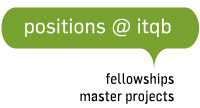[Scan] Making live-cell super-resolution microscopy easy(er)
| When |
15 May, 2019
from
12:00 pm to 01:00 pm |
|---|---|
| Where | Auditorium |
| Add event to your calendar |
|
SCAN
Title: Making live-cell super-resolution microscopy easy(er)
Speaker: Pedro Matos Pereira
Affiliation: Bacterial Cell Biology, ITQB NOVA
Abstracts: Fluorescence microscopy can reveal subcellular structures; interactions between specifically labelled molecules; or monitoring their dynamic behaviour all in living cells. However, the spatial resolution achievable is limited to 200-300 nm due the diffraction of light. In recent years, Super-Resolution Microscopy (SRM) techniques have extended the spatial resolving power of fluorescence microscopy beyond the diffraction limit. Among them, Single-molecule localization microscopy (SMLM) techniques allows to achieve near molecular scale resolution (∼ 20 nm) as well as precise and robust analysis of protein organization at different scales. Despite being now commonly used in laboratories across the world these techniques still come with challenges. They often require specialized hardware and analytics and highly intense illumination regimes, which make robust (live-cell) SRM challenging. To make SRM accessible for all researchers we have developed a toolbox of software and hardware solutions that, amongst other things, allows to: obtain SRM images from lowillumination live-cell imaging with GFP (~150 nm) with NanoJ-SRRF; and treating, labelling and imaging live or fixed cells in automated sequences to perform event-driven, super-resolved live-to-fixed and multiplexed STORM/DNA-PAINT experiments with NanoJ-Fluidics. The NanoJ toolbox improves quantitative data analysis, reliability of fluorescent microscopy studies and ultimately the accessibility of SRM to cell biology researchers.







